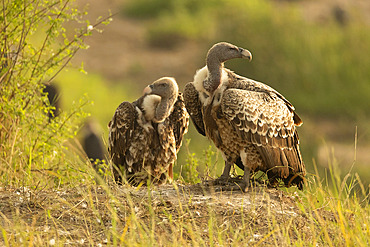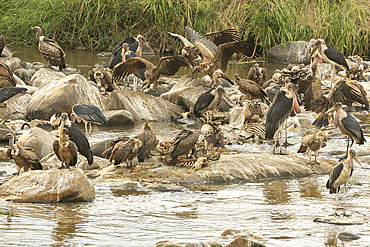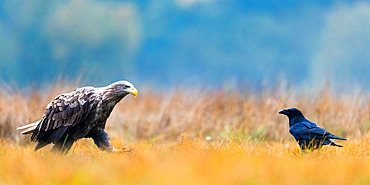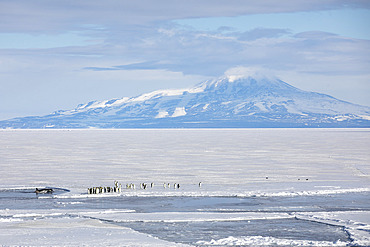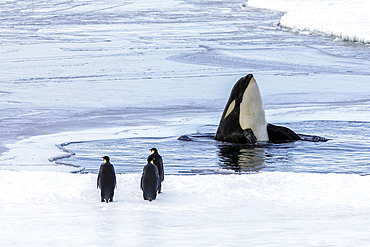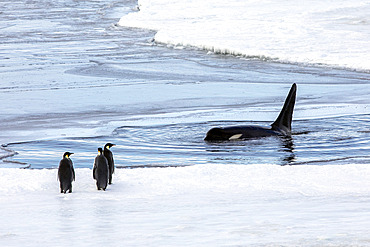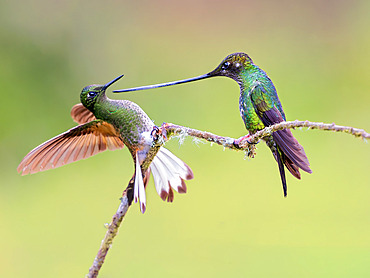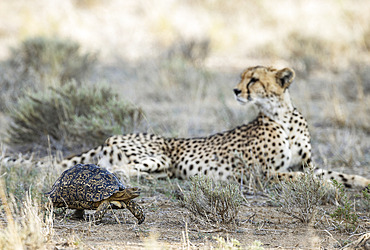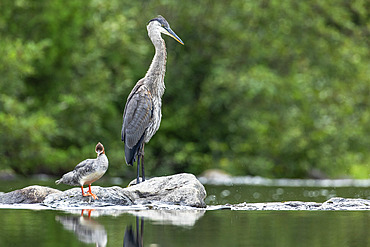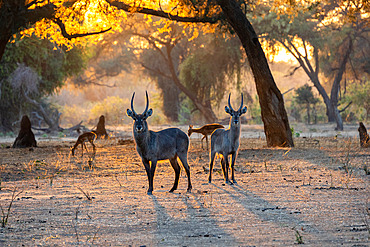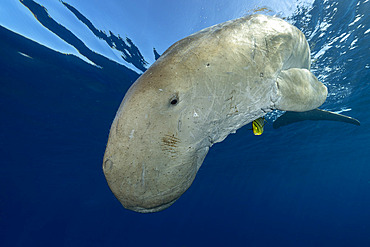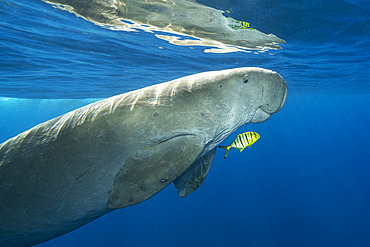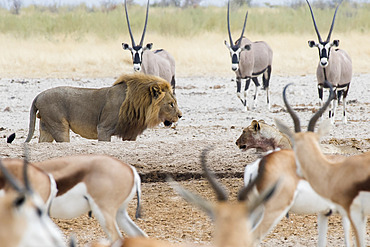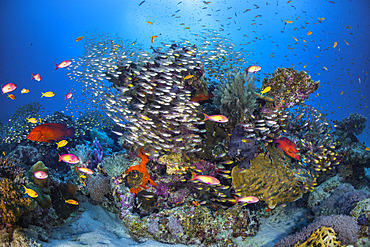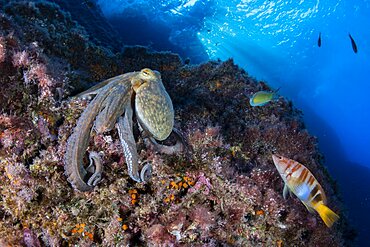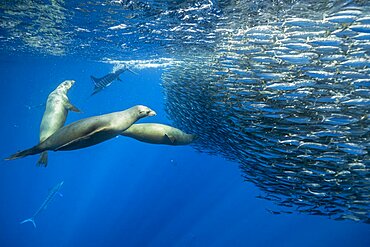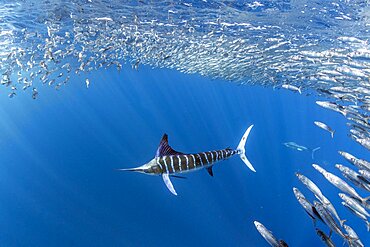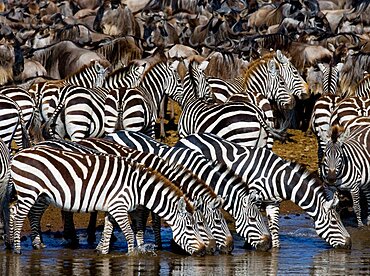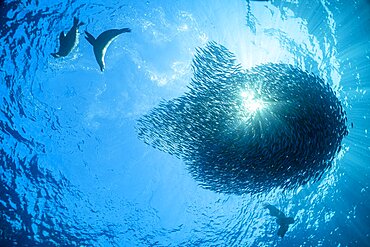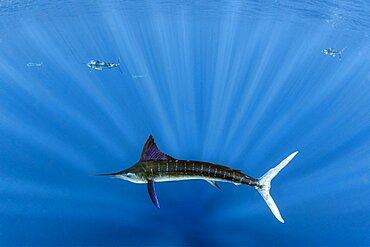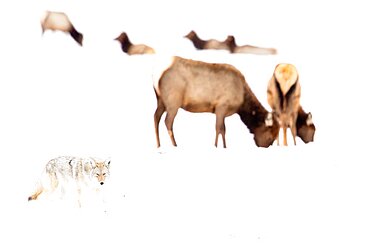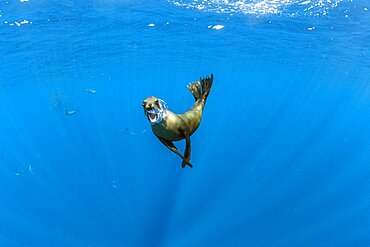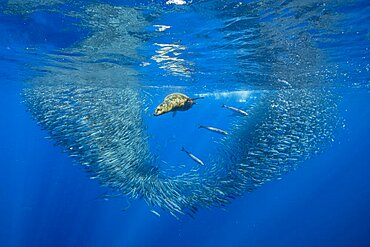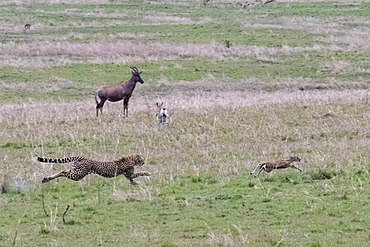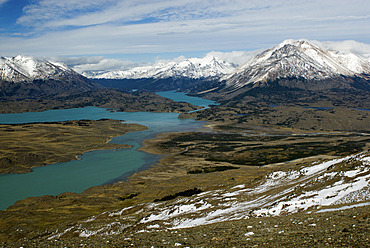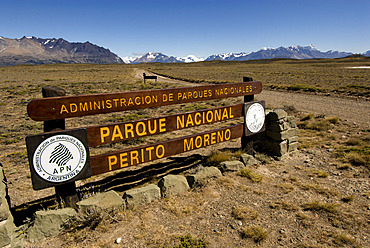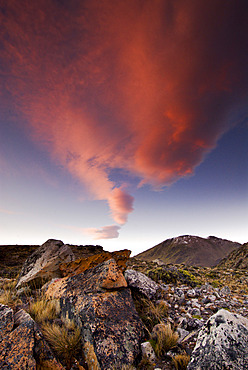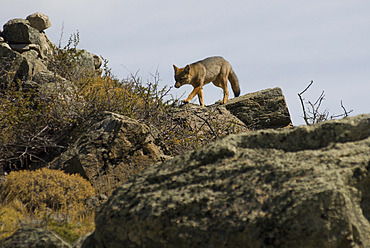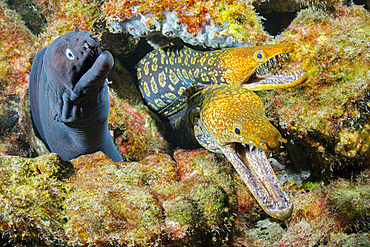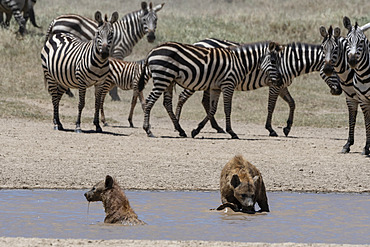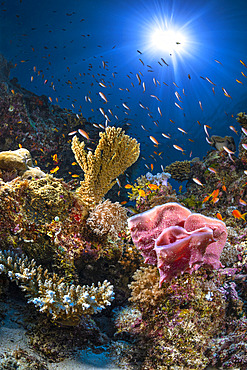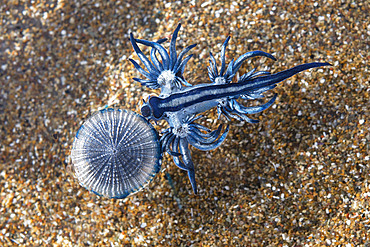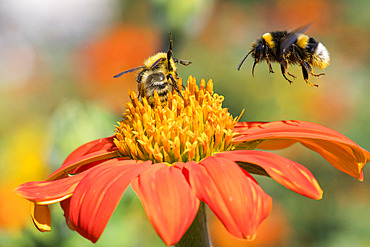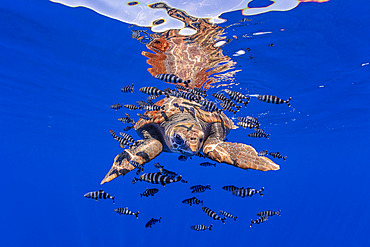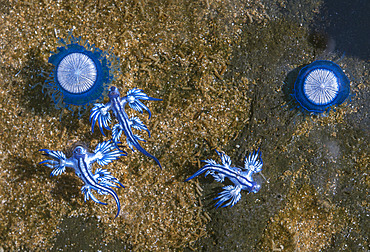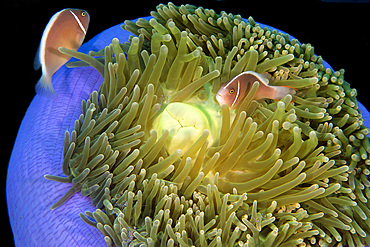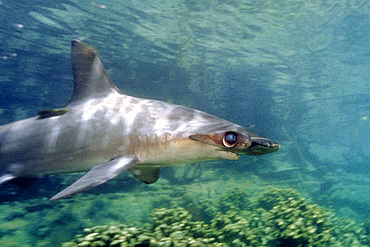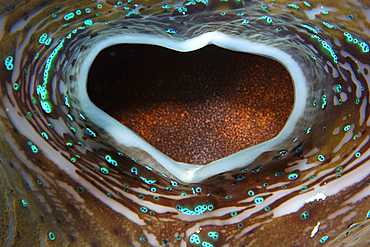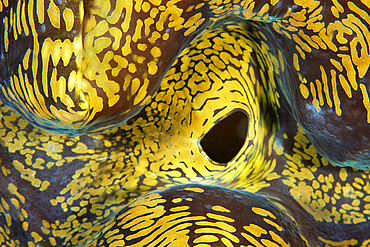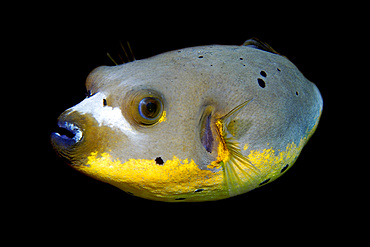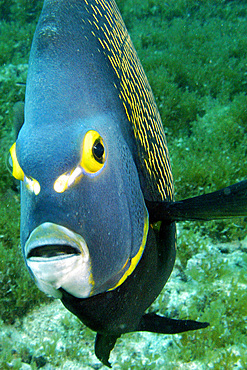Recent searches
Loading...
860-292308 - Ruppell's Griffon Vulture (Gyps rueppellii) and African white-backed Vulture (Gyps africanus) by the river, Serengeti, Tanzania
860-292307 - Ruppell's Griffon Vulture (Gyps rueppellii), African white-backed Vulture (Gyps africanus) and Marabou Stork (Leptoptilos crumeniferus) by the river, Serengeti, Tanzania
860-292240 - White-tailed Eagle (Haliaeetus albicilla) facing a Common Raven (Corvus corax) in the grass, Poland
860-292191 - Killer whale (Orcinus orca) and Emperor penguins (Aptenodytes forsteri) on pack ice in the Ross Sea, McMurdo Sound, Antarctica
860-292190 - Killer whale (Orcinus orca) and Emperor penguins (Aptenodytes forsteri) on pack ice in the Ross Sea, McMurdo Sound, Antarctica
860-292189 - Killer whale (Orcinus orca) and Emperor penguins (Aptenodytes forsteri) on pack ice in the Ross Sea, McMurdo Sound, Antarctica
860-292184 - Sword-billed Hummingbird (Ensifera ensifera), female, confronting a Buff-tailed Coronot (Boissonneaua flavescens), Colombia
860-292105 - Humpback whale (Megaptera novaeangliae) and Indo-Pacific bottlenose dolphin (Tursiops aduncus). Group of active whales followed by a school of dolphins in the clear waters of Reunion Island.
860-292072 - Blue Wildebeest (Connochaetes taurinus). Herd at sunrise. Behind them a group of springbok (Antidorcas marsupialis). Kalahari Desert, Kgalagadi Transfrontier Park, South Africa.
860-292064 - Leopard Tortoise (Stigmochelys pardalis). Frightened and quickly rushing past a resting female cheetah (Acinonyx jubatus) which does not show any interest at all in the little chelonian. Kalahari Desert, Kgalagadi Transfrontier Park, South Africa.
860-292044 - Great blue heron (Ardea herodias) and common merganser (Mergus merganser) female standing on a rock, La Mauricie National Park. Province of Quebec. Canada
860-291962 - Waterbuck (Kobus ellipsiprymnus), eat fruits of Winter Thorn (Faidherbia albida), at sunrise, Lower Zambezi national Park, Zambia, Africa
860-291951 - Southern Carmine Bee-eater (Merops nubicoides), on the cliff of the Luangwa river, a white-fronted bee-eater (Merops bullockoides) hold the tail' feathers, Luangwa river, South Luangwa natioinal Park, Zambia, Africa
860-291906 - Dugong (Dugong dugon) swimming back to the surface to breathe after feeding on seagrass meadow (Halophila stipulacea), accompanied by a young Golden trevally (Gnathanodon speciosus). Marsa Alam, Egypt. Red Sea
860-291905 - Dugong (Dugong dugon) swimming back to the surface to breathe after feeding on seagrass meadow (Halophila stipulacea), accompanied by a young Golden trevally (Gnathanodon speciosus). Marsa Alam, Egypt. Red Sea
860-291788 - Red Snapper (Lutjanus bohar) in interior of wreck with Emperor Angelfish (Pomacanthus imperator), Jepun Wreck dive site, Candidasa, Bali, Indonesia
860-291530 - Clownfish with its sea anemone, Raja-Ampat, Indonesia
860-291529 - Diver photographer and coral diver, Raja-Ampat, Indonesia
860-291528 - Clownfish with its sea anemone, Raja-Ampat, Indonesia
860-291512 - Lions (Panthera leo) between Oryx gazelles (Oryx gazella) and Springboks (Antidorcas marsupialis), Etosha National Park, Namibia
860-291511 - Lion (Panthera leo) with Plains Zebra (Equus quagga), Springbok (Antidorcas marsupialis) and Blue Wildebeest (Connochaetes taurinus) at waterhole, Etosha National Park, Namibia
860-291510 - Lion (Panthera leo) male in front of Gemsbok (Oryx gazella), Etosha National Park, Namibia
860-291481 - Reefscape from "Balcon sur le bleu" on the S pass reef, Mayotte
860-291480 - Magic coral. An explosion of life and biodiversity concentrated around this coral patch not far from the islet M'Tsamboro. Mayotte
1350-6678 - Strawberry Poison Frog (Dendrobates pumilio), adult, Bastimentos National Park, Bocas del Toro, Panama. The strawberry poison frog or strawberry poison-dart frog (Oophaga pumilio or Dendrobates pumilio) is a species of small amphibian poison dart frog found in Central America. It is common throughout its range, which extends from eastern central Nicaragua through Costa Rica and northwestern Panama. The species is often found in humid lowlands and premontane forest, but large populations are also found in disturbed areas such as plantations. The strawberry poison frog is perhaps most famous for its widespread variation in coloration, comprising approximately 15���30 color morphs, most of which are presumed to be true-breeding. O. pumilio, while not the most poisonous of the dendrobatids, is the most toxic member of its genus. The species is most diverse in Panama with varieties in vivid shades of all red, orange, blue, yellow or green, green and yellow, white with red, orange or black and spotted varieties. The most colorful mix is found in Isla Bastimentos Marine National Park though not all in one place. Colors vary by location. A beach on the north side of the island is named after the species. Two of Southern Explorations' Panama tours visit red frog habitat. Both the eight-day Panama Adventure trip and eleven-day Panama Highlights trip spend time in Isla Bastimentos Marine National Park and the former also goes to Red Frog Beach.
The red frog is not as poisonous as some of its cousins and is not a threat to humans. It subsists on a diet of ants that dine on poisonous plants, providing the red frog its protective skin toxin. Males attract females with a loud quick chirp. To hear the distinctive sound before you depart on your Panama tours, go to the University of Michigan Museum's biodiversity website (www.animaldiversity.ummz.umich.edu.) After birth, the tadpoles climb aboard the mother who deposits them in different protected areas where she retu
860-291365 - Striped marlin (Tetrapturus audax) feeding on sardine's bait ball (Sardinops sagax), Magdalena Bay, West Coast of Baja California Peninsula, Pacific Ocean, Mexico
860-291319 - Common octopus (Octopus vulgaris), followed from painted comber (Serranus scriba). Marine Protected area Punta Campanella, Massa Lubrense, Penisola Sorrentina, Costa Amalfitana, Italy, Tyrrhenian Sea, Mediterranean
860-291385 - Young Common eland (Tragelaphus oryx) with Speckled hyena (Crocuta crocuta), in the savanna, Masai Mara National Reserve, National park, Kenya, East Africa, Africa
860-291366 - California Sea Lion (Zalophus californianus) feeding on sardine's bait ball (Sardinops sagax), Magdalena Bay, West Coast of Baja California Peninsula, Pacific Ocean, Mexico
860-291373 - Striped marlin (Tetrapturus audax) feeding on sardine's bait ball (Sardinops sagax), Magdalena Bay, West Coast of Baja California Peninsula, Pacific Ocean, Mexico
860-291370 - Striped marlin (Tetrapturus audax) feeding on sardine's bait ball (Sardinops sagax), Magdalena Bay, West Coast of Baja California Peninsula, Pacific Ocean, Mexico
860-291102 - Loggerhead turtle (caretta caretta) accompanied by imperial blackfish (Schedophilus ovalis) swimming below the surface. Azores, Portugal, Atlantic Ocean.
860-291089 - Group of zebras (Equus quagga) are drinking water from the river. Kenya. Tanzania. National Park. Serengeti. Maasai Mara.
860-291368 - California Sea Lion (Zalophus californianus) feeding on sardine's bait ball (Sardinops sagax), Magdalena Bay, West Coast of Baja California Peninsula, Pacific Ocean, Mexico
860-291371 - Striped marlin (Tetrapturus audax) feeding on sardine's bait ball (Sardinops sagax), Magdalena Bay, West Coast of Baja California Peninsula, Pacific Ocean, Mexico
860-291267 - Coyote (Canis latrans) in the snow in front of wapitis (Cervus candandensis), Grand Teton National Park, USA
860-291372 - California Sea Lion (Zalophus californianus) feeding on sardine's bait ball (Sardinops sagax), Magdalena Bay, West Coast of Baja California Peninsula, Pacific Ocean, Mexico
860-291071 - Two elephants (Loxodonta africana) in Savannah. Africa. Kenya. Tanzania. Serengeti. Maasai Mara.
860-291367 - California Sea Lion (Zalophus californianus) feeding on sardine's bait ball (Sardinops sagax), Magdalena Bay, West Coast of Baja California Peninsula, Pacific Ocean, Mexico
860-291369 - California Sea Lion (Zalophus californianus) feeding on sardine's bait ball (Sardinops sagax), Magdalena Bay, West Coast of Baja California Peninsula, Pacific Ocean, Mexico
860-290702 - Hyenas, Crocuta crocuta, with a carcass, stolen from a lioness, Panthera leo. Savuti, Chobe National Park, Botswana
860-290823 - Cheetah (Acinonyx jubatus), hunting a Thomson's gazelle, Masai Mara National Reserve, National Park, Kenya
860-290663 - Lion and lionesses (Panthera leo) in front of Gemsboks (Oryx gazella) at the waterhole, Etosha National Park, Namibia
860-290701 - Hyenas, Crocuta crocuta, with a carcass, stolen from a lioness, Panthera leo. Savuti, Chobe National Park, Botswana
860-290597 - African Elephant (Loxodonta africana) and Black rhinoceros (Diceros bicornis) at waterhole, Etosha National Park, Namibia
860-290801 - Lion (Panthera leo) with Gemsbok (Oryx gazella gazella), Etosha National Park, Namibia
860-290882 - European Starling (Sturnus vulgaris) nagging with a Spotted Woodpecker (Drendrocopos major), Vosges du Nord Regional Nature Park, France
860-290885 - Spotted Woodpecker (Drendrocopos major) nagging with a European Starling (Sturnus vulgaris), Vosges du Nord Regional Nature Park, France
860-290664 - African Elephant (Loxodonta africana), Gemsboks (Oryx gazella) and Springboks (Antidorcas marsupialis) at waterhole, Etosha National Park, Namibia
860-290732 - A young cheetah, Acinonyx jubatus, hunting a blue wildebeest calf, Connochaetes taurinus. Ndutu, Ngorongoro Conservation Area, Tanzania
1350-6195 - "El Rincon" Campsite at Night, Perito Moreno National Park, Southern Andean Patagonia, Santa Cruz, Argentina
1350-6199 - Lake Belgrano view from Cerro Leon (1434m), Perito Moreno National Park, Southern Andean Patagonia, Santa Cruz, Argentina
1350-6201 - Sunrise hits Andes Mountains from "El Rincón", Perito Moreno National Park, Southern Andean Patagonia, Santa Cruz, Argentina
1350-6217 - Guanacos (Lama guanicoe) Guanaco in the Wild, Perito Moreno National Park, Southern Andean Patagonia, Santa Cruz, Argentina
1350-6164 - Entrance Sign to Perito Moreno National Park, Southern Andean Patagonia, Santa Cruz, Argentina
1350-6159 - Red Cloud over Cerro León (1424m), Perito Moreno National Park, Southern Andean Patagonia, Santa Cruz, Argentina
1350-6215 - Red Fox (Pseudalopex culpaeus), Perito Moreno National Park, Southern Andean Patagonia, Santa Cruz, Argentina
860-290272 - Canary fish. BLACK MORAY (Muraena augusti) and TIGER MORAY (Enchelycore anatina), Tenerife, Canary Islands.
860-290285 - Spotted hyaena (Crocura crocuta), Ndutu, Ngorongoro Conservation Area, Serengeti, Tanzania.
860-289699 - Brown pelican (Pelecanus occidentalis) fishing, Cayo LImon, Gulf of Honduras, Belize
860-290284 - Spotted hyaena (Crocura crocuta), Ndutu, Ngorongoro Conservation Area, Serengeti, Tanzania.
860-289787 - A Great White Pelican (Pelecanus onocrotalus) on Lake Kerkini, Greece.
860-290064 - Coral reef in the lagoon in Mayotte. A week end in Mayotte, along the S pass to admire the reef and the magnificent corals that compose it.
860-290151 - Blackcap (Sylvia atricapilla) adult male nuzzling a Marsh Tit (Poecile palustris) at the pond, June, France
860-290252 - Middle Spotted Woodpecker (Dendrocopos medius) and Black bird (Turdus merula) fighting, Vosges du Nord Regional Natural Park, France
860-290348 - Colony of Black Guillemots (Uria aalge) and Black-legged Kittiwakes (Rissa tridactyla), on the cliff of Troup Head, Scotland
860-290367 - Ducks, swans, geese and seagulls on a frozen lake in the Bois de Vincennes in winter. Bois de Vincennes. Paris (75012). France.
860-289839 - Coypu and mallard duck, Myocastor coypus, Germany, Europe
860-289823 - Underwater atmosphere with coral, sponge and sun, Mayotte
860-290103 - Black Caracara (Daptrius ater) hooted in flight by aTropical Kingbird (Tyrannus melancholicus), Alter do Chao, Brazilian Amazon.
860-290273 - Canary fish. BLACK MORAY (Muraena augusti), Brun Moray; (Gymnothorax unicolor) and TIGER MORAY (Enchelycore anatina), Tenerife, Canary Islands.
860-289869 - Loggerhead turtle (Caretta caretta) accompanied by pilotfish (Naucrates ductor) swimming near the surface. Santa Maria Island, Azores, Portugal, Atlantic Ocean
860-290260 - BLUE DRAGON (Glaucus atlanticus). Small slug that measures only about 2 cm and is generally associated with the Portuguese man of war (Physalia physalis), although it also usually appears in intertidal pools. Marine invertebrates of the Canary Islands, Tenerife.
860-289996 - Wild boar looks at a carp in pond, Sus scrofa, Hesse, Germany, Europe
860-289972 - Cattle egret (Bubulcus ibis) and Camargue breed horse, Camargue, France
860-290216 - African Elephant (Loxodonta africana) died naturally on the banks of a river and attacked by vultures, Kruger NP, South Africa
860-289876 - Bumblebee (Bombus terrestris) in flight over a garden flower in front of the Eiffel Tower in Paris, France
860-289868 - Loggerhead turtle (caretta caretta) accompanied by pilotfish (Naucrates ductor) swimming near the surface. Vulnerable. Santa Maria Island, Azores, Portugal, Atlantic Ocean
860-290259 - BLUE DRAGON (Glaucus atlanticus). A small peacic slug that measures only about 2 cm and is generally associated with the Portuguese frigatebird (Physalia physalis) or the blue button (Porpita porpita) on which it feeds. They can also appear in intertidal pools. Marine invertebrates of the Canary Islands, Tenerife.
1350-2560 - Pink anemone fish, Amphiprion periderion, on magnificent sea anemone, Heteractis magnifica, Dumaguete, Negros, Philippines.
1350-2572 - Scalloped hammerhead shark, Sphyrna lewini, Kaneohe Bay, Oahu, Hawaii (N. Pacific).
1350-2481 - Giant clam, Tridacna gigas, siphon detail, Rongelap, Marshall Islands, Micronesia
1350-2455 - Fluted giant clam, Tridacna squamosa, siphon detail, Namu atoll, Marshall Islands (Pacific).
1350-2462 - Wire coral goby, Bryaninops yongei, on wire coral, Cirripathes anguina, Namu atoll, Marshall Islands (N. Pacific).
1350-2478 - Large group of pink whipray or Tahitian stingray, Himantura fai, Rongelap, Marshall Islands, Micronesia
1350-2525 - Blackspotted puffer fish, Arothron nigropunctatus, Dumaguete, Negros, Philippines, Visayan sea.
1350-2344 - French angelfish, Pomacanthus paru, Ilha rata, Fernando de Noronha national marine sanctuary, Pernambuco, Brazil (S. Atlantic)
1350-2464 - Whitetip reef shark, Triaenodon obesus, resting in cave, Namu atoll, Marshall Islands (N. Pacific).
1350-2523 - Reef cuttlefish, Sepia sp., displaying defensive posture, Dumaguete, Negros Island, Philippines.
1350-2320 - Piranha (Pygocentrus nattereri), a carnivorous fish, caught on a line, southern Pantanal, Mato Grosso do Sul, Brazil
1350-2451 - Over under image of marshallese boy smiling underwater next to coral reef and coconut trees lining the shore of Majikin Island, Namu atoll, Marshall Islands (N. Pacific).
1350-2448 - Coral reef, Namu atoll, Marshall Islands (N. Pacific).
1350-2463 - Regal angelfish, Pygoplites diacanthus, Namu atoll, Marshall Islands (N. Pacific).
1350-2499 - Balloonfish, Diodon holocanthus, at night, Dumaguete, Negros Island, Philippines.
1350-2473 - Red (Lace) coral, Distichopora violacea, feather stars, and juvenile gray reef shark, Carcharhinus amblyrhynchos, Ailuk atoll, Marshall Islands, Pacific
1350-2465 - Whitetip reef shark, Triaenodon obesus, Namu atoll, Marshall Islands (N. Pacific).
1350-2507 - Anemone shrimp, Periclimenes brevicarpalis, El Dorado reef, Dumaguete, Negros Island, Philippines.
